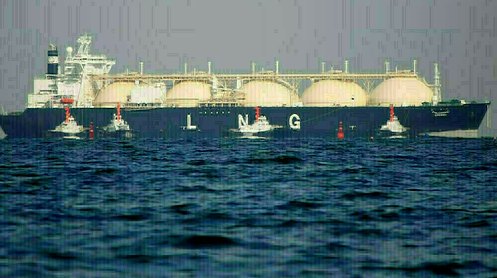ISLAMABAD: Facing a worsening glut of imported gas, Pakistan has requested Qatar to divert 24 contracted LNG cargoes from its 2026 supply plan to the international market, as the country struggles with declining domestic demand and mounting financial strain on its gas infrastructure.
According to officials from the Petroleum Division, the proposal—currently under discussion as part of the annual delivery plan—is expected to be finalized by the end of October. The request is being made under the Net Proceed Differential (NPD) clause in Pakistan’s long-term LNG contracts with Qatar, which allows the resale of excess cargoes abroad.
However, the clause offers limited financial relief, as Qatar retains profits from international sales, while Pakistan bears any losses if spot market prices fall below the contracted rate. By contrast, Pakistan’s deal with Italy’s ENI includes a more flexible NPD clause that allows profit and loss sharing with Pakistan LNG Limited (PLL). Under that arrangement, Pakistan is already diverting one ENI cargo per month in 2025 and plans to continue in 2026, excluding January.
Pakistan currently imports nine LNG cargoes per month from Qatar — five under a 15-year contract at 13.37% of Brent crude, and four under a 10-year deal at 10.2% of Brent. Both are governed by strict take-or-pay terms, obligating payment regardless of consumption. Originally, these imports were meant to supply four RLNG-based power plants in Punjab, which are now operating at significantly reduced capacity.
Due to collapsing demand, Pakistan faces an annual surplus of about 35 LNG cargoes, including 11 from ENI. The excess has led to line-pack pressures exceeding 5.17 billion cubic feet (bcf) in the RLNG pipeline network — above the 5 bcf safety threshold — raising fears of a potential system failure.
To ease the pressure, authorities have shut down domestic gas fields producing 270–400 mmcfd. Industry experts warn that prolonged closures could cause irreversible well damage, impacting both crude oil and LPG production. Attock Refinery Limited has already reported difficulties operating at full capacity due to reduced crude supply.
The drop in RLNG demand has been especially sharp in the power and export sectors. As of mid-October, power plants are consuming only 486 mmcfd, far below their 800 mmcfd commitment, while export-oriented industries have slashed RLNG usage from 350 mmcfd to just 100 mmcfd, citing high prices of around Rs3,500 per MMBtu, including a 5% off-grid levy of Rs570 per MMBtu.
Pakistan’s four major RLNG-based power plants — Haveli Bahadur Shah, Balloki, Bhikki, and Trimmu — were designed as “must-run” units with a 66% take-or-pay commitment based on 62% efficiency. However, a 2020 ECC decision reduced this threshold to 50%, bringing them under the Economic Merit Order, which prioritizes cheaper power sources — rendering RLNG generation uneconomical.
This shift has created a financial burden for the Petroleum Division and Pakistan State Oil (PSO), which manages LNG imports. In FY2024–25 alone, the government had to divert RLNG worth Rs242 billion to domestic consumers to manage the mounting oversupply.
Story by Khalid Mustafa







